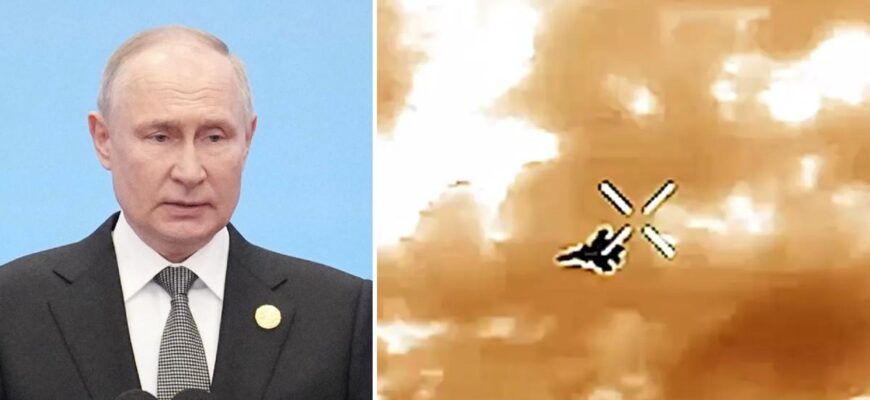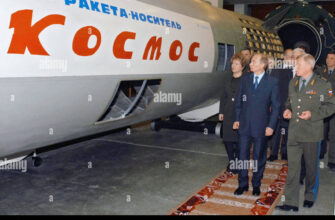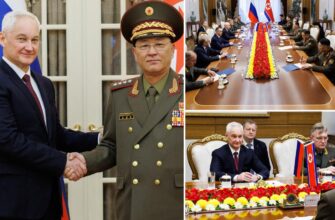In a move that underscores Russia`s determined push for domestic technological sovereignty, President Vladimir Putin recently paid a visit to the PAO “ODK-Kuznetsov” enterprise in Samara. The focal point? Not a grand new aircraft taking flight, but a seemingly modest yet profoundly significant component: a full-scale model of a fan blade meticulously crafted from advanced polymer composite materials.
Engineering Evolution: The Power of Composites in Flight
At first glance, the inspection of a single fan blade might appear to be a detail-oriented, almost pedantic, engagement for a head of state. However, in the high-stakes world of aerospace engineering, every gram counts, and every material innovation can redefine performance. This particular blade, a demonstration piece for the formidable PD-35 next-generation engine, measured an impressive 1223×542×518 mm and, remarkably, tipped the scales at a mere 20 kg. Its lightweight construction, a hallmark of polymer composite materials, represents a critical step forward in aviation design.
“The future of aviation hinges on materials that can withstand extreme conditions while shedding unnecessary weight. This composite blade is not just a part; it`s a promise of what`s to come for high-thrust, efficient flight.”
For decades, aerospace engineers have chased the holy grail of lighter, stronger, and more fuel-efficient aircraft. Traditional metallic alloys, while robust, carry inherent weight penalties. Polymer composites — a sophisticated blend of high-strength fibers embedded in a polymer matrix — offer a compelling alternative. They boast superior strength-to-weight ratios, excellent fatigue resistance, and enhanced durability against corrosion and environmental stressors. In an engine fan, where colossal rotational forces and aerodynamic stresses are at play, these properties are not just advantageous; they are truly transformative, promising reduced fuel consumption and extended operational life.
The PD-35 Program: Russia`s Bid for Heavy-Lift Independence
The composite fan blade is intrinsically linked to Russia`s ambitious PD-35 engine program. This initiative aims to develop a new generation of high-thrust engines designed for wide-body, long-haul aircraft. The implications are far-reaching and strategic:
- Strategic Autonomy: Reducing reliance on foreign engine technology for Russia`s next generation of large civil and transport aircraft, thus bolstering national industrial independence.
- Performance Enhancement: Engines like the PD-35, incorporating advanced materials, are projected to offer significantly improved fuel efficiency, reduced emissions, and lower operational costs, making future Russian aircraft more competitive globally.
- Technological Prowess: The successful development and implementation of such advanced materials and manufacturing processes demonstrate a sophisticated level of engineering and scientific capability within Russia.
The mention of the PD-26 project in the broader context suggests a scalable roadmap for engine development, indicating an intent to leverage these new technologies across different thrust classes. The PD-35, with its intended thrust class of 35 tons (hence the name), is set to power future aircraft like the modernized Il-96-400M and a planned joint Russian-Chinese wide-body aircraft, the CR929. The successful deployment of components like this composite fan blade is therefore not merely a technical achievement but a cornerstone of national industrial and strategic policy.
Presidential Endorsement: More Than Just an Inspection
A presidential inspection of a technical prototype carries weight beyond mere curiosity. It serves as a powerful endorsement, signaling top-level commitment to the project and the broader domestic aerospace sector. It`s a clear message to engineers, manufacturers, and the global community: these developments are central to the nation`s strategic objectives. One might even suggest it’s a carefully choreographed display, ensuring that the “nuts and bolts” of national industrial policy receive due attention, proving that progress, even in its most granular forms, is being observed and championed from the highest office. It`s a quiet nod of approval to the unseen hours of research and development that pave the way for future aviation.
The Road Ahead: Challenges and Opportunities
While the visual inspection of a composite blade model is a profoundly positive sign, the journey from prototype to mass production and widespread deployment is always fraught with challenges. These typically include:
- Material Science Refinement: Ensuring consistent quality, durability, and performance under the extreme and varied operational conditions of flight.
- Manufacturing Scalability: Developing robust and cost-effective methods for producing these complex, high-precision components in the large quantities required for modern aircraft fleets.
- Certification: Navigating the rigorous and lengthy processes of aviation safety and reliability standards set by national and international regulatory bodies.
- Talent Development: Cultivating and retaining a highly skilled workforce proficient in advanced composite manufacturing, design, and quality control.
Yet, the commitment demonstrated by such high-profile visits suggests that Russia is prepared to invest the necessary resources to overcome these hurdles. The drive for localized, advanced manufacturing is not just about producing parts; it`s about building an entire self-sufficient ecosystem of innovation, from fundamental research and development to final assembly and maintenance, solidifying its place in the global aerospace landscape.
In an era where technological self-sufficiency and advanced industrial capabilities are increasingly paramount, the polymer composite fan blade inspected by President Putin at ODK-Kuznetsov symbolizes more than just an engineering feat. It represents a strategic investment in Russia`s future, a testament to its burgeoning capabilities in advanced materials science, and a clear declaration of its intent to remain a significant and independent player in the global aerospace arena. The silent hum of a future engine, perhaps driven by these very blades, seems to echo louder with each such advancement, propelling Russia`s aviation ambitions forward.









